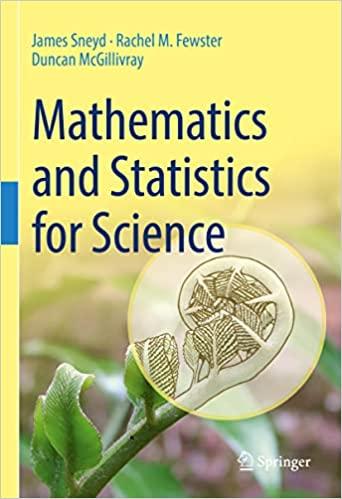When investigating a sensitive topic, such as how many people are using illegal drugs, researchers wont always
Question:
When investigating a sensitive topic, such as how many people are using illegal drugs, researchers won’t always get honest answers if they do a straightforward survey. An approach that is sometimes used is to randomise the survey question, so that only the respondent knows which question they are responding to. For example, when investigating drug use among teenagers, interviewers might show each respondent the three cards in Fig.
34.5. The respondent is then allotted one card at random, which the interviewer can’t see. They are asked to give an honest answer to the question on the card, then dispose of the card to ensure there is no record of which question they answered.
If the teenager gives the answer "yes", the interviewer doesn’t know if they are responding to the monkey-picture question or to the drug-use question. The aim is to ensure that participants feel safe to give honest answers.
Suppose this scheme is implemented in a school with 600 teenaged pupils. Let p be the unknown proportion of the pupils who have used illegal drugs in the last year. We don’t know which question each pupil was responding to, but we can observe the number of "yes" responses. Assume that all answers are honest. Our aim is to estimate the rate of illegal drug use, p.
a. The sample space is Ω = {pupils}. Define events C1, C2, and C3, that a pupil selects Card 1, 2, or 3, respectively, and event A that the pupil answers "yes" to the question on the card. What are the values of P(A | C1), P(A | C2), and P(A | C3)? Write your answers in terms of p where applicable.
b. Assume that each pupil has an equal chance of being allocated each card, so P(C1) = P(C2) = P(C3) = 1 3 . Show that P(A) = p + 1 3 .
c. Suppose we observe 216 "yes" answers out of 600 respondents. Show that the likelihood function is L(p ; 216) = K(p + 1)
216(2 − p)
384 , where K is a constant. You should specify an expression for K, but there’s no need to calculate its value. Also state the range of values of p for which the likelihood is defined.
d. By differentiating the likelihood, find the maximum likelihood estimate of p. You may assume that the likelihood attains a unique maximum in the range 0 < p < 1.
e. Briefly give an argument to derive a common-sense estimate of p, when 216 out of 600 pupils give "yes" answers.
Is your common-sense estimate the same as the maximum likelihood estimate?
Step by Step Answer:

Mathematics And Statistics For Science
ISBN: 9783031053177
1st Edition
Authors: James Sneyd, Rachel M. Fewster, Duncan McGillivray






